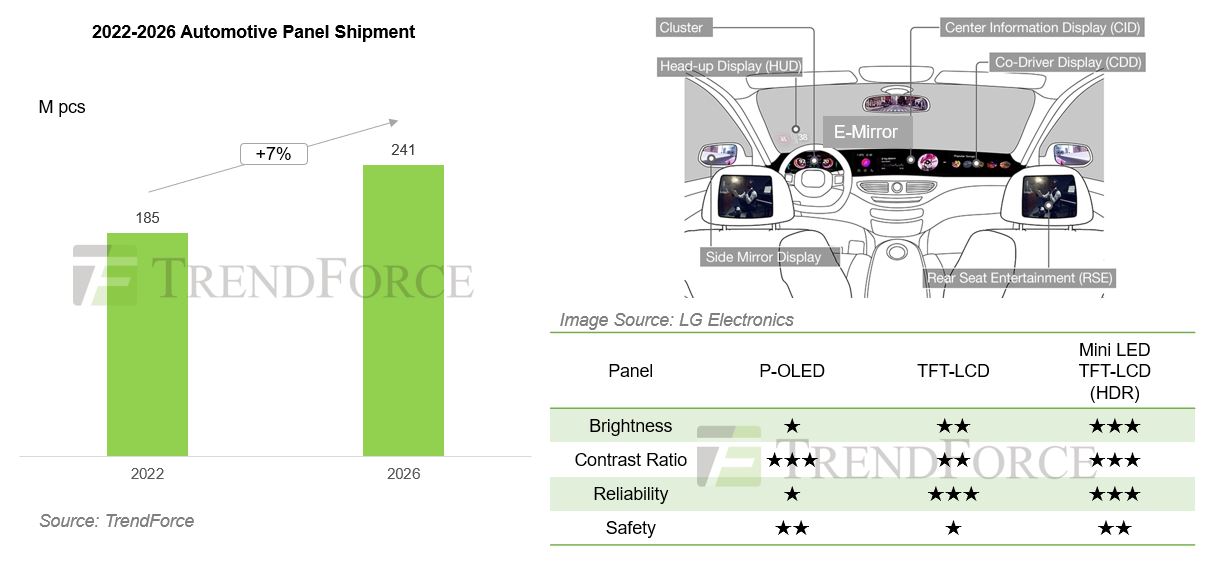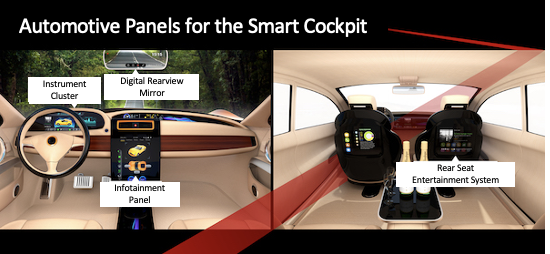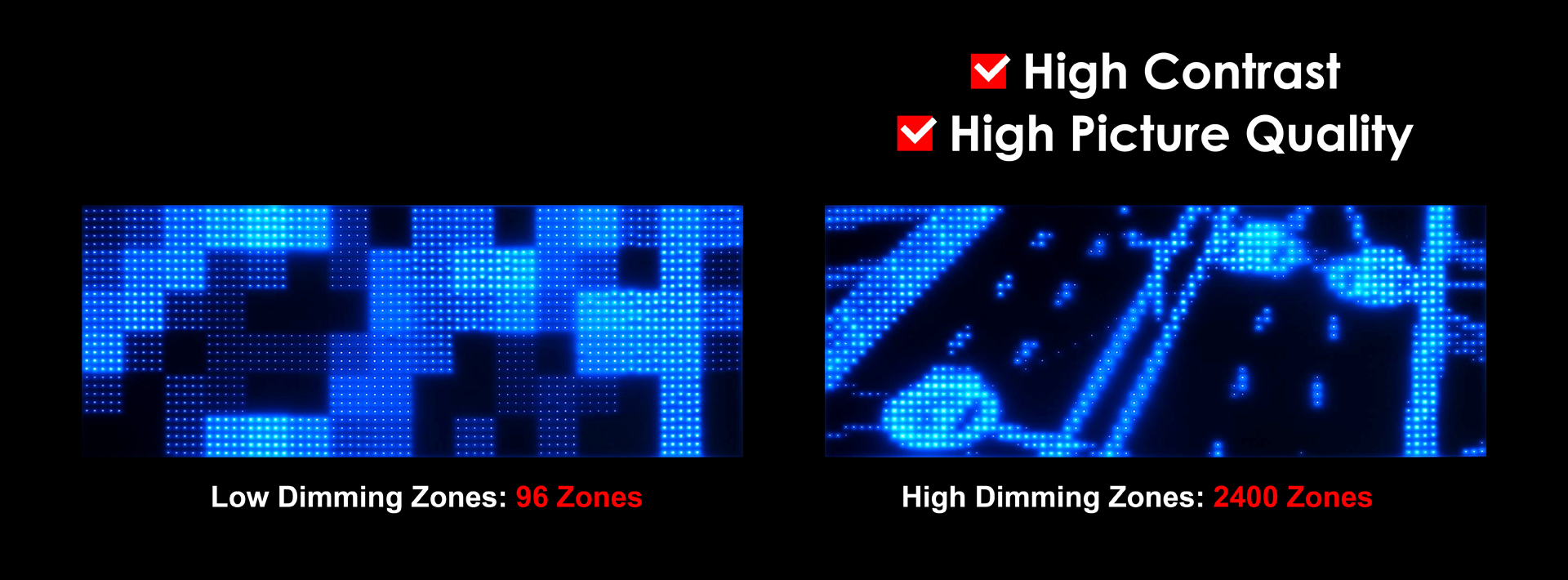TrendForce released the 2022 Global Automotive
LED Product Trend and Regional Market Analysis, which indicated shipments of automotive LED display panels will reach 185 million units this year. New automotive display trends include 1.5m full-width display, free shape, transparent display and high resolution (250 ppi) in addition to HDR, local dimming and wide gamut. Shipments are expected to jump to 241 million in 2026 with a compound annual growth rate of +7% from 2022-2026.
The smart cockpit can be considered a system designed to integrate messaging, communication, entertainment, driving and sentry systems. To lure users, many automakers are differentiating with smart cockpits. Both the driver and passengers want to receive information quickly and intuitively in a smart cockpit, highlighting the importance of automotive displays.
As an essential human-machine interface (HMI), front-seat displays include instrument panel, rearview mirror, head-up display (HUD) and center information display. Rear-seat entertainment applications are increasingly using the display panel that is both high resolution and smart. At the same time, core elements of the smart cockpit comprise safety, convenience, practicality and entertainment among others that are delivered to the driver and passengers through automotive display technology.
Figure 1. Smart Cockpit
User-oriented design – automotive display application requirements
As far as drivers are concerned, the most important requirements for automotive displays are high brightness and low-grayscale performance. The most extreme scenarios include strong noon sunlight and entering underground garage or tunnels and other low-light environments. For safety reasons, the driver needs to see the display clearly regardless of the changing ambient light.
Moreover, passengers want automotive displays with high contrast ratio and high picture quality. Moreover, multimedia entertainments demand superior contrast ratio and display performance. We need both to create good user experience.
Designing based on user requirements – enhancing smart cockpit display performance
Macroblock develops innovative technologies for smart cockpits. First, Macroblock meets automotive driver requirements with:
● High brightness
Macroblock mini-LED backlight automotive solutions combine multi-channel and time-multiplexing architectures to increase the number of LEDs that they can drive simultaneously for superior brightness. The driver solution with 100mA max current also boosts brightness.
● Low-grayscale performance
Macroblock automotive backlight solutions use “Hybrid Dimming Technology,” which applies PWM dimming during the high-grayscale stage and PAM dimming during the low-grayscale stage. Therefore, the panel adjusts brightness to the changing ambient light to maintain excellent display performance in the low-light state.
Figure 2. Macroblock Hybrid Dimming Technology
*Click to View Low-grayscale Circuit Technical Details (Starting at 47:00)
At the same time, Macroblock takes passengers’’ demand for high contrast and high picture quality seriously. Therefore, Macroblock’s full-array local dimming (FALD) technology enables automotive mini-LED solutions to support high dimming zones to control every LED precisely and independently. Excellent display performance can be expected with deep blacks and brilliant colors for premium passenger entertainment experience.
High Dimming Zones vs. Low Dimming Zones. Source: Macroblock
Macroblock automotive display driver solutions
Macroblock announced MBI5353Q and MBI6353Q mini-LED backlight solutions for smart cockpits. They are AEC-Q100 Grade 1 certified for automotive electronics reliability.
MBI5353Q features 20mA max output, 48-channel, and supports up to 32-scan design. It can be expanded with a Bridge IC. As ASIL refers to Automotive Safety Integrity Level, MBI5353Q with error detection meets ASIL-A requirements.
MBI6353Q boasts 100mA max output for high-brightness performance, 48-channel, and supports up to 4-scan design. It can streamline automotive display routing without a Bridge IC. Moreover, MBI6353Q meets ASIL-B requirements as it features error detection and real-time feedback.
According to the 2022 Global Automotive LED Product Trend and Regional Market Analysis released by TrendForce, important car models such as Cadillac LYRIQ, NIO eT7, Roewe RX5 and Li L9 combine FALD mini-LED backlight technology and high local dimming zones for high-contrast display experience to meet the HDR, local dimming and wide gamut trends. Roewe RX5 and Li L9 are equipped with premium Macroblock products.
As Ford, BMW, Mercedes-Benz and Volvo will introduce automotive displays with HDR-enabled FALD mini-LED backlight, we believe demand for these displays will continue to grow rapidly in the next 5 years.
You are welcome to visit the physical Macroblock booth at
CES 2023 for details of innovative automotive driver IC technology.
Article written by TrendForce





 CN
TW
EN
CN
TW
EN









